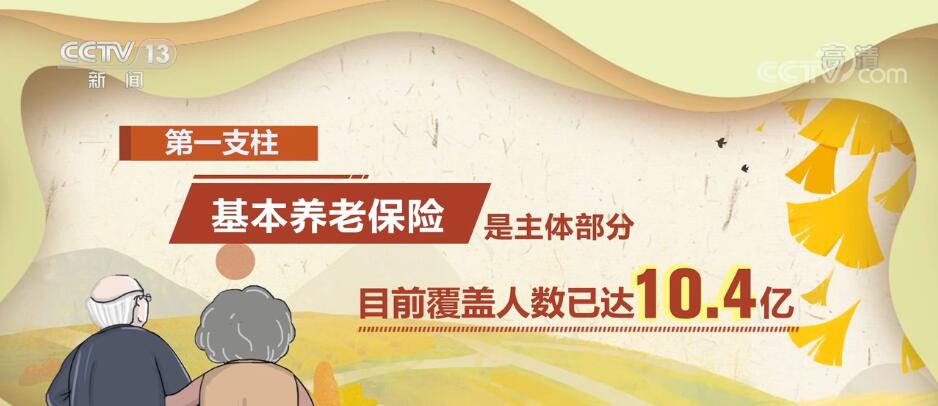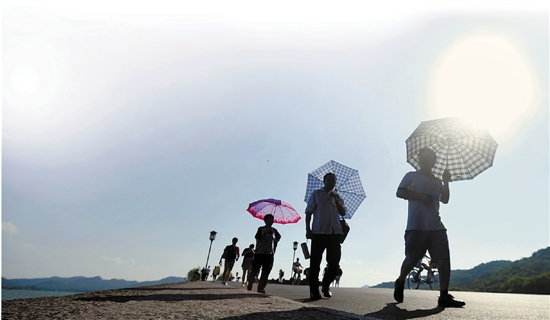CCTV News:The Measures for the Implementation of Individual Pensions, jointly issued by Ministry of Human Resources and Social Security, Ministry of Finance, State Taxation Administration of The People’s Republic of China, China Banking and Insurance Regulatory Commission and CSRC, was officially released to the public on November 4th. This means that the personal pension system that the society has been paying attention to for a long time has been formally implemented.

So what is a personal pension? Ministry of Human Resources and Social Security said that personal pension is a supplementary pension insurance system. At present, China’s multi-level endowment insurance system mainly includes "three pillars". The first pillar is the basic old-age insurance, which is the main part, and the current coverage has reached 1.04 billion; The second pillar is enterprise annuity and occupational annuity. By the end of 2021, more than 70 million employees had participated in the two annuities. The third pillar includes personal pension and other personal commercial pension financial services. Why should we develop a personal pension system? What’s the use of personal pension? Let’s listen to the heads of relevant departments in Ministry of Human Resources and Social Security.

Jia Jiang, Deputy Director of Ministry of Human Resources and Social Security Endowment Insurance Department:Personal pension is a part of the third pillar with institutional arrangements, and it is a supplementary old-age insurance system with government policy support, voluntary participation and market operation. The establishment of the personal pension system will add an accumulation on the basis of the basic old-age insurance, better meet the diversified old-age insurance needs of the people, and make the old-age life more secure and quality.
Workers in China can participate in the personal pension system.
The Measures for the Implementation of Personal Pension clearly states that the personal pension system covers a wide range, and all workers who participate in the basic old-age insurance for urban workers or the basic old-age insurance for urban and rural residents in China can participate, which also makes the personal pension a "universal" system. So why do you make such a rule?
Jia Jiang, Deputy Director of Ministry of Human Resources and Social Security Endowment Insurance Department:The first aspect is from the perspective of system function. Only by participating in the basic old-age insurance and realizing the premise of "basic", participating in the personal pension can realize the "supplementary" pension function. Second, from the perspective of coverage, China’s basic old-age insurance system has achieved full coverage of the system. At present, the number of participants has reached 1.04 billion, basically covering the working-age population. Third, willing workers can participate, which can realize long-term payment of personal pension and continuously increase the accumulation of funds in personal accounts.
Personal pension shall be subject to personal account system.
The personal pension is based on the personal account system, including two accounts, one is the personal pension account and the other is the personal pension fund account. The Measures for the Implementation of Personal Pension stipulates that personal pension accounts should be opened on the personal pension information management service platform through the national unified online service portal or commercial banks. Personal pension fund accounts can be opened or designated by a commercial bank that meets the requirements, and can also be designated by other personal pension product sales organizations that meet the requirements.
So, why set up two accounts? What is the relationship between the two accounts? In addition, is there an upper limit for personal pension? Continue to look at the interpretation of experts.
Jia Jiang, Deputy Director of Ministry of Human Resources and Social Security Endowment Insurance Department:To participate in individual pension, participants must first open an individual pension account. By the participants through the national social insurance public service platform, in the personal pension information management service platform to open. It is used to record the whole process information of participants as the basis for participating in the personal pension system and enjoying preferential tax policies. After opening a personal pension account, it is necessary to open a personal pension fund account, which is designated or opened in a commercial bank that meets the requirements. These two accounts are unique and correspond to each other. Among them, through the channels of commercial banks, these two accounts can be opened at one time.
The "Implementation Measures" clarify that the maximum amount of personal pension paid by participants each year is 12,000 yuan, which can be paid monthly, by installments or by year. The payment amount is accumulated according to the natural year and recalculated in the following year.
Jia Jiang, Deputy Director of Ministry of Human Resources and Social Security Endowment Insurance Department:In the future, the state will raise the upper limit of the payment level in a timely manner according to the level of economic and social development and the development of a multi-level endowment insurance system. For participants, they can flexibly choose whether to participate every year or in parts of the year according to their own financial affordability, or they can choose the amount of payment they need during the year, which can be paid in one lump sum or in parts.
Personal pension account funds are mostly used to buy financial products.
After the money is deposited into the personal pension account, how should the money be used and how can it be preserved and increased? The "Measures for the Implementation of Individual Pensions" clearly stipulates that the individual pension shall be subject to the individual account system, and the payment shall be entirely borne by the participants themselves. They shall independently choose to purchase financial products such as savings deposits, wealth management products, commercial endowment insurance, Public Offering of Fund, etc. that meet the requirements, implement complete accumulation, and enjoy preferential tax policies in accordance with relevant state regulations.
Personal pension products are safer, more stable and standardized.
In this way, the funds in the personal pension account are mainly used to buy financial products, so what is the difference between personal pension products and general financial products?
Jia Jiang, Deputy Director of Ministry of Human Resources and Social Security Endowment Insurance Department:Personal pension products are diversified, which is conducive to meeting the investment needs of different groups, and also conducive to promoting market competition, prompting financial institutions to develop better and more financial products and participate in the personal pension system. Compared with general financial products, personal pension products should have the properties of safe operation, maturity and stability, standardized target and long-term value preservation.
The "Implementation Measures" stipulate that participants independently decide the variety and amount of personal pension products purchased from the personal pension fund account. Personal pension product sales institutions should take the principle of "sales appropriateness" as a principle, do a good job of risk warning, and may not actively introduce personal pension products beyond their risk tolerance to participants.
Exempt individual pension fund accounts from multiple fees.
On November 4th, China Banking and Insurance Regulatory Commission issued interim measures to solicit opinions from the public on the management of personal pension business of commercial banks and wealth management companies. The interim measures require commercial banks to waive multiple fees for personal pension fund accounts.
Personal pension fund account is a special account with the functions of personal pension payment, transaction fund transfer, income collection, payment and payment of personal income tax, information inquiry and so on. The fund account will be closed before the conditions stipulated by the state are met.
Dong Ximiao, a researcher at the Institute of Finance of Fudan University:The closed operation of individual pension fund account means that individuals can only make money into the fund account, but can’t transfer it out or collect it before meeting the conditions stipulated by the state. Closed operation helps to ensure that the account funds and income are used for pension purposes, and also helps to guide participants to develop long-term investment habits.
The interim measures also propose that everyone can only choose a qualified commercial bank to open a fund account, and the fund account may not be opened directly in a commercial bank by a personal pension product sales organization. Commercial banks are exempt from annual fees, account management fees, SMS fees and transfer fees for capital accounts.
Personal income tax is paid at the rate of 3% at the time of collection.
Then, what favorable policies can you enjoy by participating in personal pension? First of all, in the payment link, the part that does not exceed the upper limit of 12,000 yuan per year can be deducted before the personal income tax by withholding the comprehensive income of personal income tax or settling it in the next year. Secondly, in the investment link, personal income tax will not be levied on the investment income. Finally, when participants receive personal pensions, they pay personal income tax at the rate of 3%, which is relatively low, regardless of the method and amount of collection. The method of collection is determined by the participants themselves, and they can receive individual pensions on a monthly basis, in installments or at one time.
The assets in the personal pension fund account can be inherited
In addition, whether individual pension can be inherited is also of great concern. It is clearly stipulated in the Measures for the Implementation of Individual Pensions that if a participant dies, the assets in his personal pension fund account can be inherited. If the participant’s social security card is cancelled due to reasons such as going abroad or settling abroad, death, etc., the commercial bank will transfer the funds in the participant’s personal pension fund account to the fund account designated by himself or his successor.








